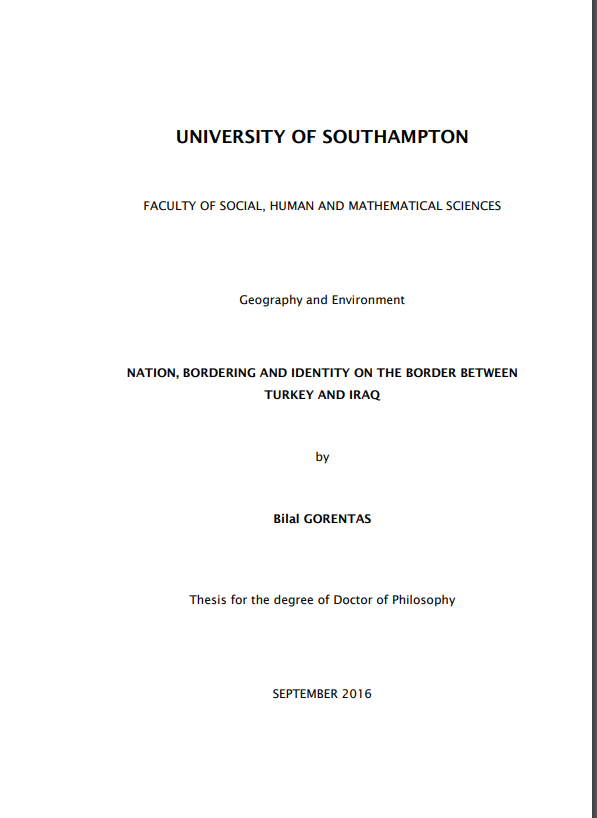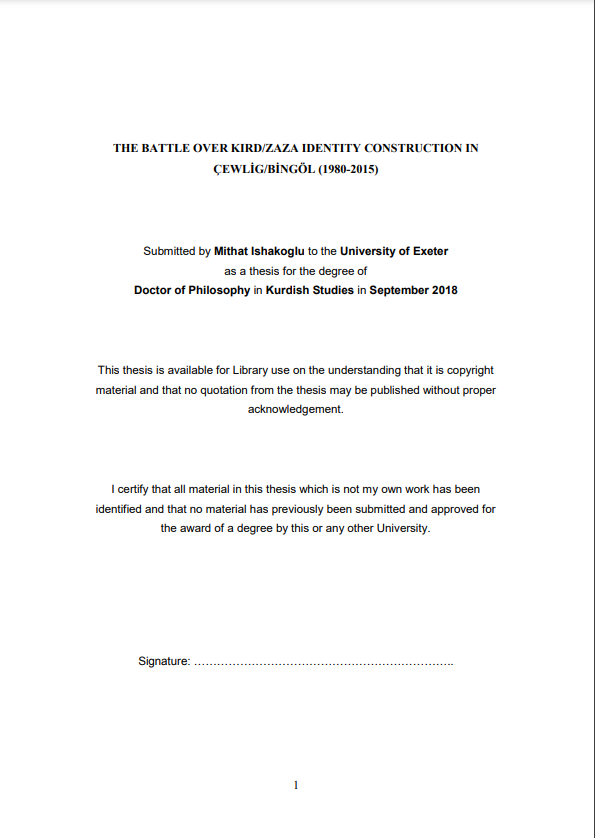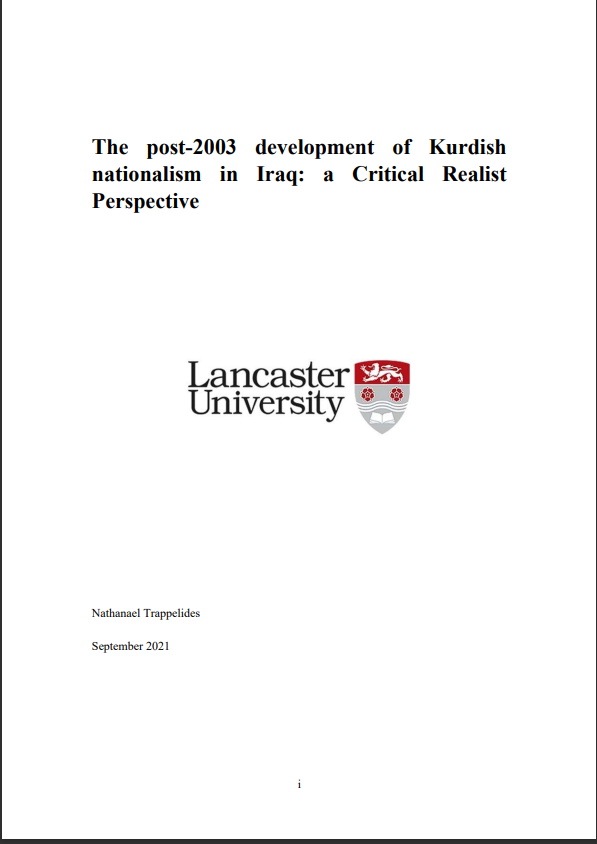Archives: Theses
- January 30, 2024
- 4:26 pm
Abstract / Review
This dissertation responds to Syrian nationals’ stories of displacement and settlement. Within these accounts, people contend with forced migration through language, personal networks, and technology. A sociomaterial theory of literacy recognizes the way in which these interviewees sought safety and belonging while accessing concrete systems in order to achieve material
- December 31, 2023
- 7:13 pm
Abstract / Review
This thesis is a study of the different trajectories of Kurdish nationalism in the Middle East. In the late 2010s – years of momentous advance for Kurdish forces in Turkey, Iraq, and Syria – Kurdish politics was deeply divided into competing movements pursuing irreconcilable projects for the future of the
- October 21, 2023
- 7:04 am
Abstract / Review
This research explores the extent of the shift in the Turkish state’s discourse towards the Kurds’ language rights and the sources of resistance to their recognition under the successive AKP governments between 2003 and 2015. Examining this issue, I explore 1) the true nature of the Kurds’ language-related rights in
- October 16, 2023
- 11:09 pm
Abstract / Review
This thesis explores the impact of the border between Turkey and Iraq on Kurdish identity. Since the demarcation of the border in 1926, both Turkey and Iraq have struggled to accommodate their Kurdish citizens into their common national communities. There have been numerous bloody conflicts on both sides. As of
- October 2, 2023
- 2:14 am
Abstract / Review
This thesis examines the identity construction of Kird/Zaza in Çewlig/Bingöl. It will track how the Kird/Zaza identity is being constructed, and who the main actors of this identity formation are. This research will also analyse how the political and cultural battle over Kird/Zaza identity has been conducted in Çewlig/Bingöl between
- October 2, 2023
- 1:34 am
Abstract / Review
In this study, narrative analysis of Kurdish folktales is performed by analytical reading method and a general typology is presented. The aim of this typology is to set an example for the future Kurdish narratives of children. For the purpose mentioned above, 1300 folktales were compiled and written and the
- October 1, 2023
- 11:02 pm
Abstract / Review
The question of whether a fully-fledged Kurdish nationalism does exist has attracted a reasonable amount of attention across recent decades, subject to the increasing appreciation of its modern development having been strongly influenced by distinct contexts experienced across the different states within which Kurds were separated after the collapse of
- October 1, 2023
- 10:55 pm
Abstract / Review
How does a distinct people become the world’s largest stateless nation? Dispersed but contiguously situated in the Mesopotamian plain and the eastern-Anatolian plateau of the Middle East, the Kurds were granted the right to local autonomy, and then independence within one year by the Treaty of Sèvres (1920). But it
- October 1, 2023
- 10:51 pm
Abstract / Review
Iraqi Kurdistan emerged as a “free” entity in a humanitarian intervention in 1991. Since then, it has been the subject of growing international involvement. The region gained its legal status in 2005 as an autonomous territorial entity in the aftermath of another US-led military intervention. Rather than incorporating the region









